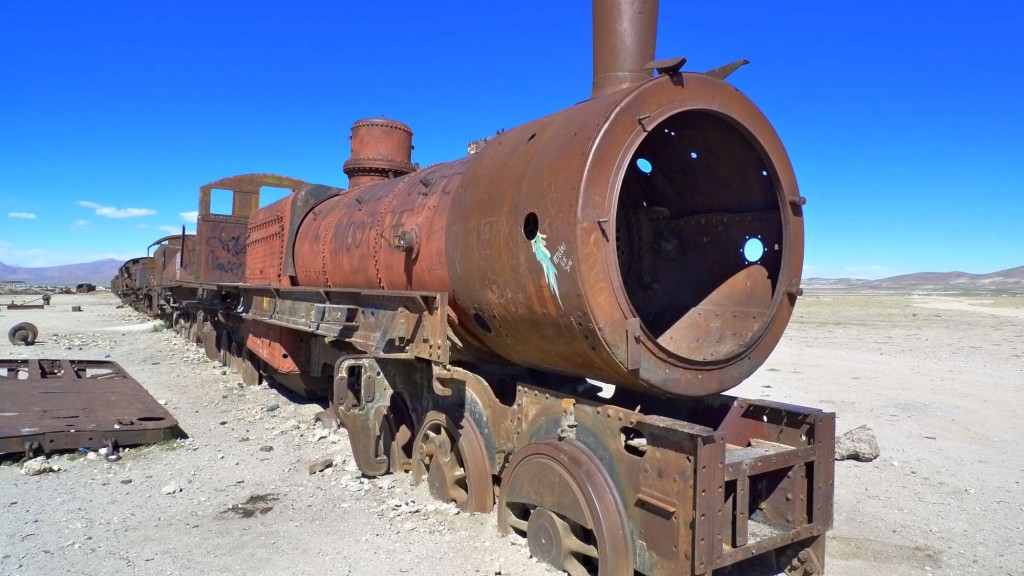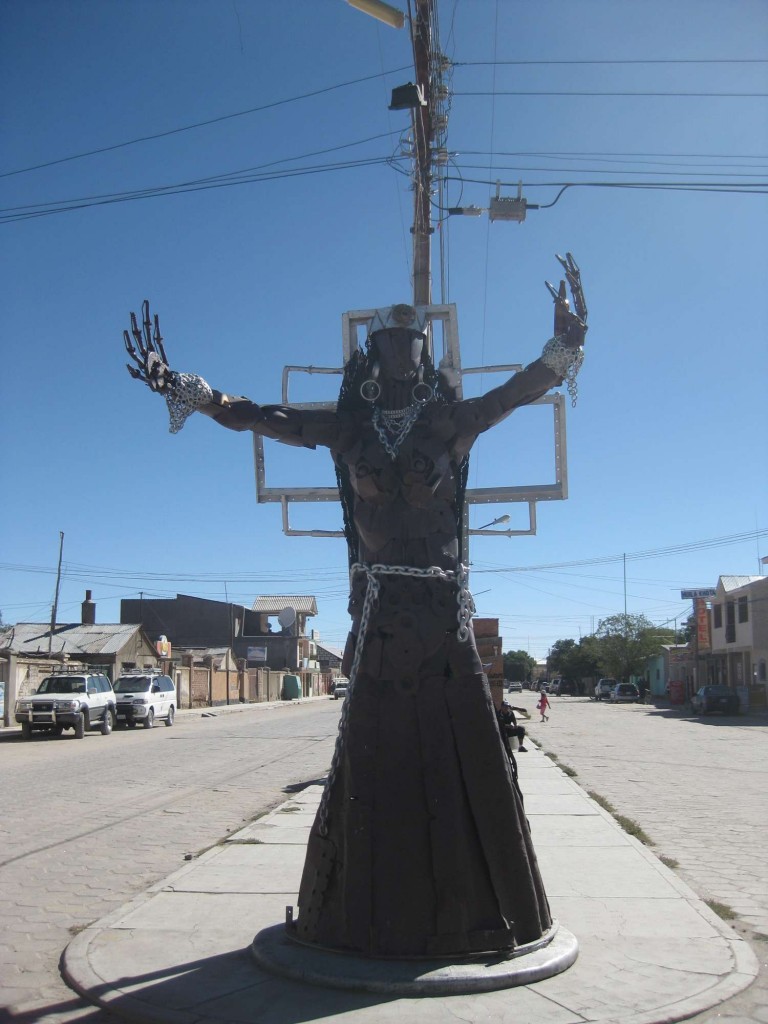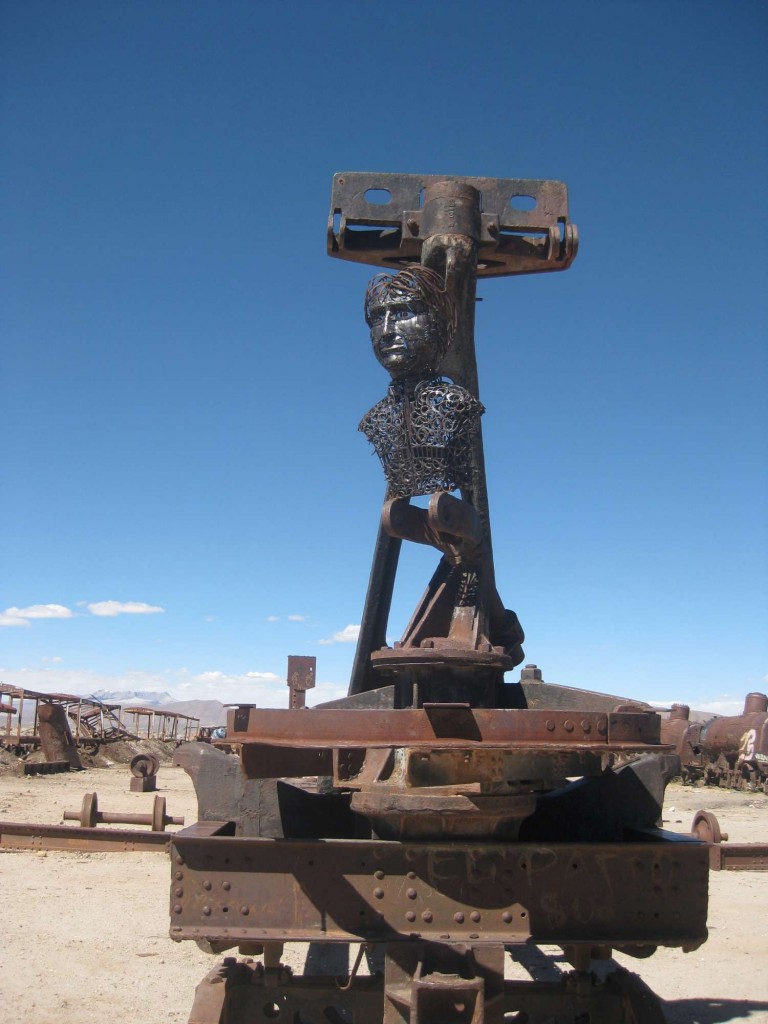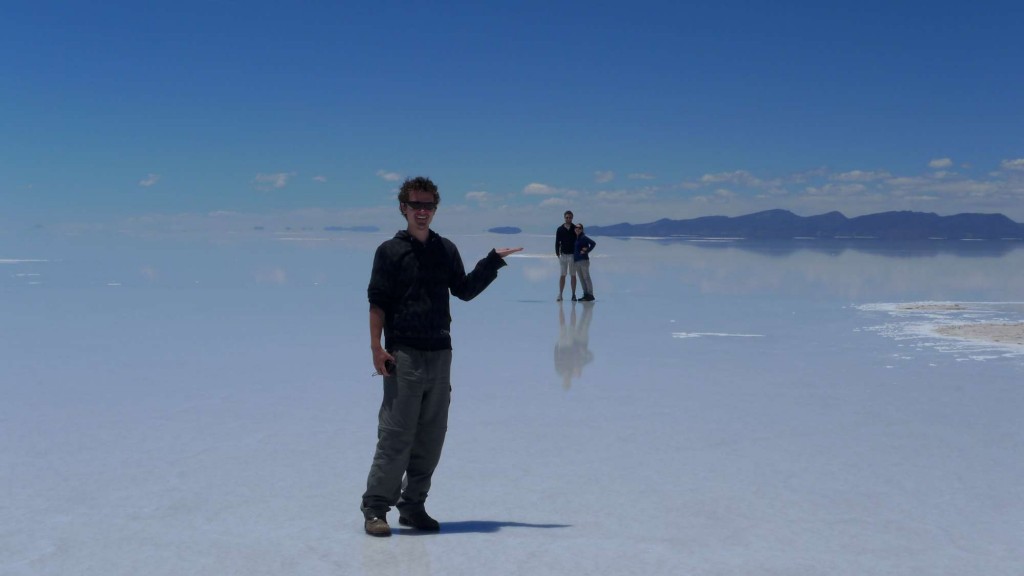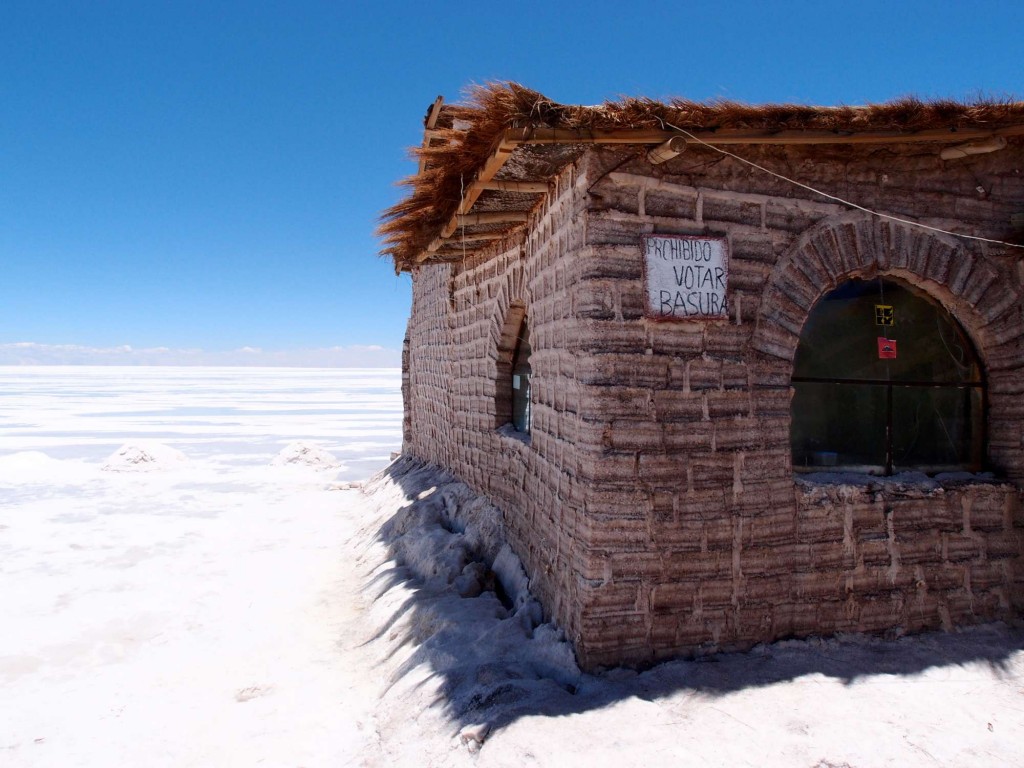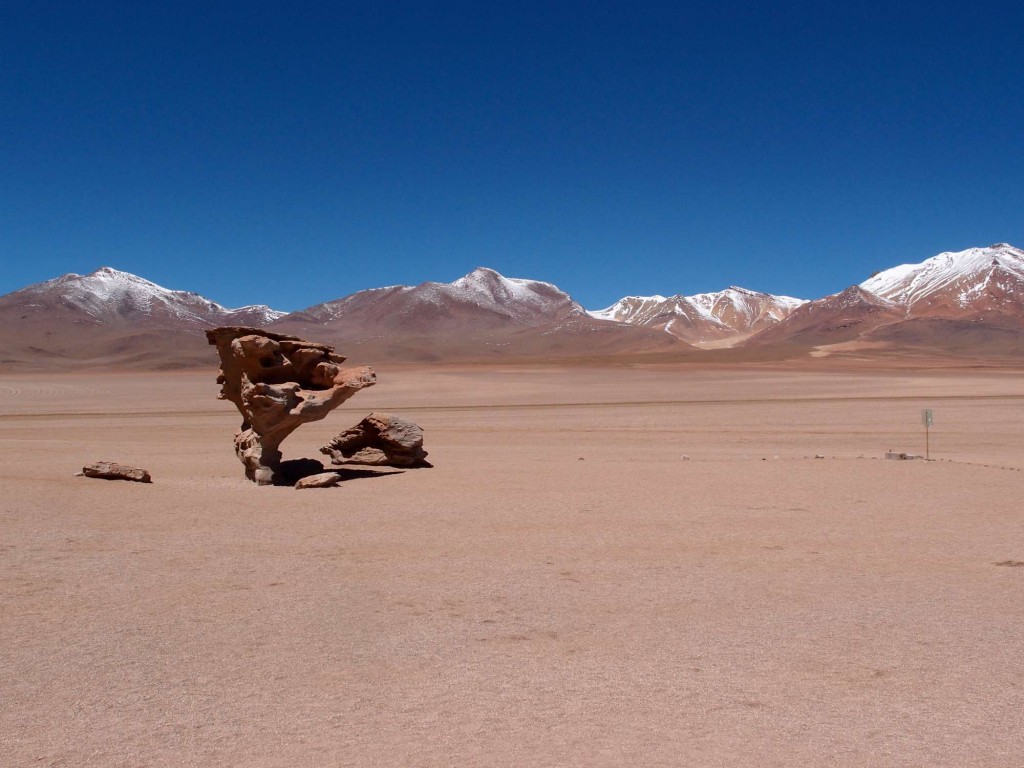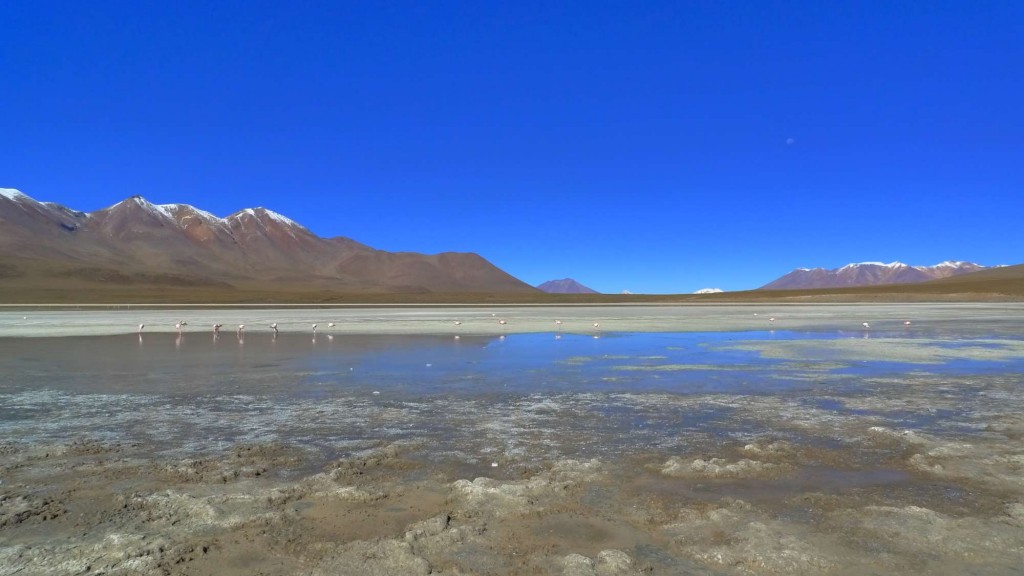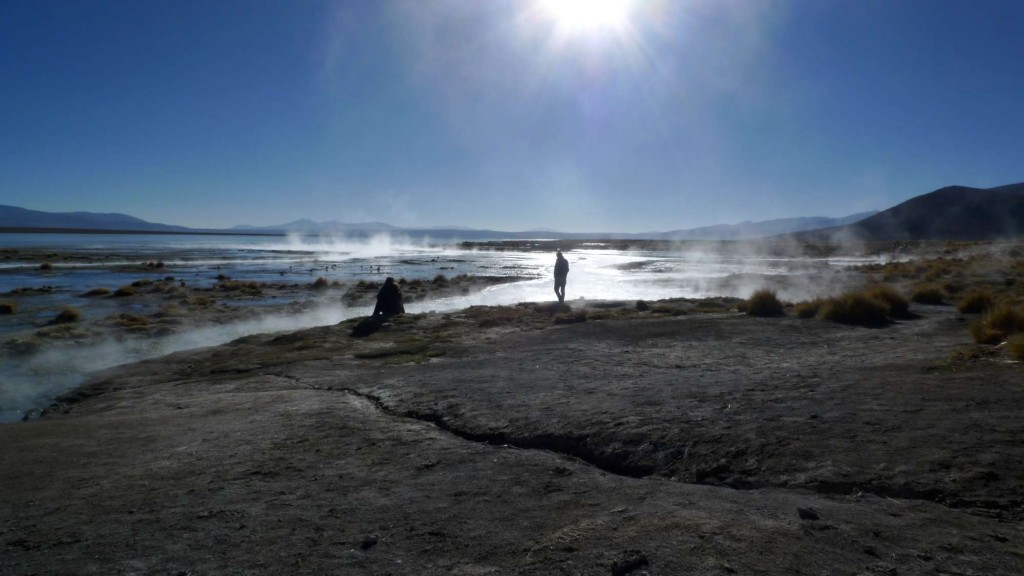Salar de Uyuni
Wednesday, January 18th, 2012Hello hello!
So yesterday morning we returned from a three-day, 4WD tour of the southern Bolivian salt flats and surrounds. The tour started from a creepy little town called Uyuni, a twelve hour bus trip south of La Paz. Uyuni is a bit like what I imagine, from the movies, Mexico might be like; the land is dry and expansive, dotted with low lying shrubs, lots of old cans, and the occasional abandoned vehicle beside the dusty, bumpy roads. At the beginning of the nineteenth century, a British company sponsored railways from mineral rich Uyuni to the Pacific Ocean, but the mining industry collapsed early, and now the trains sit in the Cemeterio de Trenes, the “Train Cemetery”. Its just a few kilometers out of town, but it feels like the middle of nowhere, and the rusty old trains stretch for hundreds of metres.
The council has added a couple of see-saws and a few creaky swings, perhaps to cheer it up a bit. Its a really cool place actually, and we had a lot of fun climbing along, above and through the trains, but creepy none the less. In the town center the city has erected statues made of wire and old engine parts – it really could be the setting of a horror movie!
Now, the main reason that people go to Uyuni is its proximity to the Salar de Uyuni, the world’s largest salt flats. The salt flats cover 10.5 thousand square kilometres, and almost entirely flat. In fact, it is so remarkably flat that it is used by satellites to calibrate their altimeters (measures of altitude). The salt is very reflective, particularly now in the rainy season, and so the first thing that we noticed when approaching the salt flats was what looked to be floating mountains. Because the salt reflects the sky so well, it can be almost impossible to tell where the horizon actually lies. This quality, and the white shiny uniformity of the surface, lends itself to the forced perspective photographs which are very popular with tourists (and which you may have seen). Nick and Mark were ideologically opposed to such frivolity, so I have no photos of a mini me perched on someones shoulder or the like. Though they did (bless ‘em!) condescend to take this one…
Impressed? Mark took great care to get the angle just right.
The only building in the salt flat is a hotel built entirely of salt, and so aptly named the Salt Hotel. The beds (though you´ll be pleased to hear not the bedding), walls, furniture is all made of salt bricks. Very neat.
We spent day number two driving between surreal volcanic rock formations (affectionately named the Salvador Dali Desert), and lagoons filled with flamingos.
Flamingos are a very beautiful species of bird. They were the only visible life in the lagoons (and for that matter anywhere nearby), and looked very tranquil resting on one leg meditatively in between skimming for micro-organisms. Its hard not to think of the Queen of Hearts swinging her croquet mallet in Wonderland though…
Our favorite lagoon was the last of the day; it was enormous, 4300 metres above sea level, nestled in mountains and the water was entirely red. There were flamingos here too (“siempre flamingos!” – always flamingos! our driver would chuckle at every new lake), and also lots of native camels called vicuñas.
The final day was spent hopping between different areas of thermal activity. At the first stop sulfurous gas burst from the ground either in enormous clouds or perfectly formed towers.
The second stop was for warm thermal pools, a god send at 4900 meters (read: COLD!), and after three nights without showers… The setting was lovely too!
We actually got as far South as the Chilean border, where we dropped off the two Korean girls we were traveling with who were bound for a 24hr bus to Santiago. On the way back up the only thing of real interest (and Nick may debate its interest!) was a little town called San Cristobal. I’m not sure who Saint Cristobal was, but his name is everywhere (you might remember the giant Virgin Mary statue on the top of San Cristobal hill in Santiago, there’s also San Cristobals in Argentina, Mexico and Ecuador that we know of). We’ve come across a couple of other names that are obviously beloved for reasons that I am ignorant of, for example “Colon” – we’ve seen Colon streets, suburbs and – my favorite – “Colon Cafe”.
But back to San Cristobal in Bolivia. It was a tiny little town of 350 people, until one of the world’s largest silver deposits was discovered beneath. The result was that a Canadian mining company paid for the entire town to be moved 17km to a new site. San Cristobal had a beautiful old Colonial church (well over 350 years old), and this too was moved stone by stone and rebuilt in the new settlement. Here it is:
So, that was our last few days. I think we were all struck by the beauty and diversity of Bolivia. My bet is that in the next ten years or so, tourism in Bolivia is going to absolutely boom. There’s an album below with a few extra shots from the trip, enjoy!
